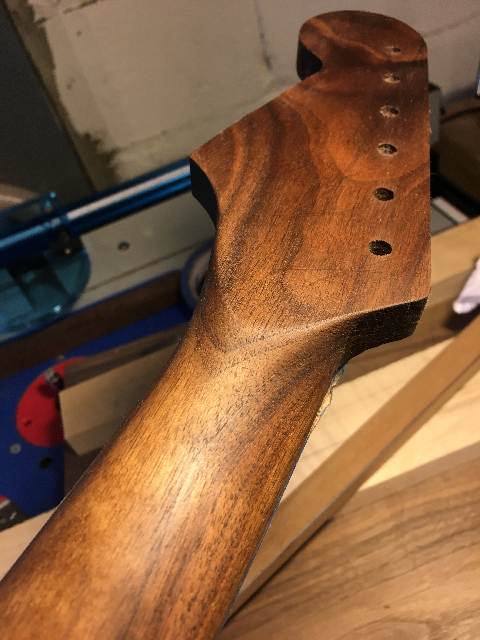While sanding the sides with the spindle sander, I discovered a surface imperfection. at first I thought it was a just a crack.
Here is a close-up detail shot.
I used a plastic pick to examine the depth of this hole.
For this repair I will be using glue, epoxy and walnut sawdust.
I tape off around the damaged area.
The holes are filled with glue and sawdust. I then let it dry over night.
The hole isn't completely filled.
I mix up a slurry of epoxy and walnut sawdust.
I tape off the damaged are once more. And this time, fill the hole with the epoxy slurry. For this one I chose a slow-curing epoxy. I'll let this sit for 24 hours.
The epoxy slurry leaves a raised scar, that I scrape off, and then sand with an 80 grit paper.
The end result is a nicely filled repair. It will still need to be filled.
Here, I've wet the wood with mineral spirits to see how the repair may look after the final finish is applied.
I had a couple very small gaps between the fretboard and neck. I used the same glue and sawdust process for this repair.

















































